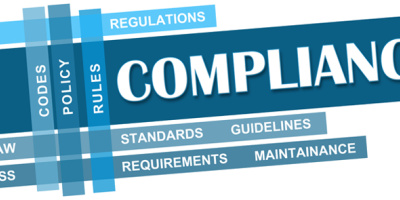Securing your data involves understanding data privacy regulations and the principles behind those rules
by Graham Williamson
Editor’s note: This chapter is excerpted from chapter 11 of Identity Management: A Business Perspective (MC Press, 2017).
Identity management has a direct impact on the security of identity data and regulatory controls over the collection, storage, and usage of identity information.
As we become more connected, organizations, both commercial and public sector, will increasingly store more data about us. This will be driven by the desire of companies to understand us so that they can sell us more products and services, and by governments that want to leverage their identity information to adopt a “digital first” strategy for providing services. As these organizations extend their data repositories, the general public expects this data to be adequately managed to protect their privacy. However, members of the public are becoming increasingly scared because they know systems are vulnerable and they doubt the capability of organizations, particularly government, to adequately protect it.
Organizations can therefore expect more, not less, regulation. Rather than resist this, we need to embrace it, plan for it, and deploy systems that are compliant. As with most regulatory issues, this needs to be done this before it has to be done.
Regulation Summary
The major regulations that affect data security are as follows:
PCI
The payment card industry (PCI) provides guidelines on the correct treatment of information such as credit card details and provides an auditable standard. It is most important that, as e-commerce continues to grow, organizations safeguard their credit card information handling to avoid revenue loss from repudiated transactions and violation penalties. Payment gateways must adhere to PCI guidelines and submit to periodic audits.
HIPAA
The purpose of the US Health Insurance Portability and Accountability Act (HIPAA) is to protect health information. While the main focus of health information protection has been embodied in personal health record controls, HIPAA goes beyond that to set regulation for security controls that manage access to protected health information. It stipulates how hospitals and health centers should ensure protection of sensitive data.
SOX
The Sarbanes-Oxley Act (SOX) in the US does not directly impinge on data privacy. It does seek to regulate, and provide useful guidelines for, corporate governance, including auditor independence and the need to disclose data loss that has detrimental effects.
FERPA
The Family Education Rights and Privacy Act (FERPA) seeks to manage public schools and colleges in the US and provides a framework for any educational jurisdiction to follow in the collection and management of student education records.
GLBA
The Gramm-Leach Bliley Act (GLBA) forms part of privacy regulation in the US and provides guidelines for the control of personal information, particularly in the financial industry. Banks, insurance, and wealth management companies are covered by the GLBA, which requires them to implement safeguards in regard to client personal information.
Privacy and Data Protection
Some countries have focused legislation specifically on privacy of sensitive data, while others have addressed privacy in the wider context of data protection.
Definition
The concept of privacy is quite broad. We all think we know what it means, but there are many viewpoints as to how best to define it. Although there are dictionary definitions of what it is, it is more meaningful to define what it means:
Privacy is the desire of individuals to control, or influence, the collection, usage, and disclosure of data about themselves.
The following terms are related to privacy, and need definition in their own right:
- Confidentiality—seeks to control the release of identity data
- Secrecy—is the intentional concealment of identity data
- Anonymity—is the ability to conceal identity data
Privacy is largely a Western construct, and even among the developed countries there is wide divergence on the desire for privacy and toleration of its violation. In many Western European countries, particularly those that have experienced occupation during wartime, the desire for privacy is tempered by the desire for efficiency of government services. In other countries such as the US and the UK, there is a skepticism of government and its ability to keep identity information private. In these geographies, privacy is highly regarded, and efficiency of government services will typically be subjugated to privacy protection.
Principles
Most privacy legislation has at its core certain principles that, if followed, will keep user information private and avoid contravention of privacy legislation, with its attendant costs. Table 1 lists these principles.
Table 1: Privacy principles
|
Principle |
Description |
|
Policy |
Organizations that collect personally identifiable information (PII) should publish a policy that states how the organization collects, stores, and uses such information. Instruction must be provided regarding how an individual may gain access to the organization’s information to validate its accuracy. Instruction should be provided regarding how an individual may lodge a complaint about the information that is kept on them and how the organization will deal with such complaints, including expected timeframes. |
|
Collection of data |
Organizations may only collect PII data that is required for a specific transaction. They can’t collect data that they “might need in the future” or collect extra data for marketing purposes unless they expressly state that and seek the subject’s consent. This means that, if an organization wants to use transaction data for big data analysis for marketing purposes, they must de-identify it. A common violation of privacy policy is committed by software testers when they use a client database for test purposes, often in the cloud. In such an instance, the identity data should be obfuscated by randomizing first and last names, address detail, and phone numbers. When collecting data, the organization must ensure that informed user consent is collected; that is, advice as to the stated use of the information must be provided. If a transaction does not need the explicit identification of a user, there must be the option of completing a transaction anonymously or with a pseudonym. |
|
Disclosure of personal information |
It is forbidden for organizations to disclose PII to other organizations, or even other divisions within the same organization, unless expressly agreed to by the subject. This means that if a bank collects PII for the purpose of opening a bank account, they cannot provide this information to their insurance branch without the subject’s express permission. |
|
Cross-border disclosure |
Organizations that store PII information on citizens of the country in which they undertake business must not store the information in a jurisdiction that does not have legislation at least as stringent as in the home country. For instance, if a call center is established in a low-cost jurisdiction that has weaker privacy legislation, the organization must deploy specific controls to ensure the privacy of persons in the data file used by call center representatives. |
|
Use of government identifiers |
There are constraints on the use of government identifiers as an index on data files. For instance, a department of motor vehicles might use a driver’s license number as an index, but another department should not use driver’s license numbers as an index for their data stores. Equally, commercial organizations that collect driver’s license numbers (e.g., car rental companies) should create their own index fields and not use driver’s license numbers for this purpose. This does not preclude the use of a driver’s license number to locate a user record. |
|
Quality of PII data |
Organizations that collect PII data must take steps to maintain its currency. Once a data record has passed its date of currency, there are two options: the company must engage resources to validate its accuracy and correct it if it’s wrong, or it must delete the data record. The date of refresh should be stated in the organization’s privacy policy. However, it’s generally agreed that address data is sufficiently out of date after three years. |
|
Security of PII data |
Organizations must deploy appropriate security measures, commensurate with the sensitivity of the data in question. Data must be protected from misuse, interference, unauthorized access, modification, and disclosure. This includes data backups and files used for testing purposes. A related control is the necessity to delete or destroy PII information that is no longer needed; it’s not permissible to maintain a data file containing PII data just because it might be of use in the future. |
|
Access and correction of PII data |
If an entity holds personal information about an individual, the entity must, on request by the individual, give them access to the information. This means that processes must be established to facilitate access, and correction processes should be published in the organization’s policy statement with an indication of the timeframe that the subject should expect for a response. If the subject of a record containing PII data requests correction of a data element, it must either be changed or annotated. |
While an initial reaction might be that these requirements are onerous, they do in fact make good sense. Organizations are well advised to adopt these principles and avoid the cost and embarrassment of data loss that might otherwise occur.

























 More than ever, there is a demand for IT to deliver innovation. Your IBM i has been an essential part of your business operations for years. However, your organization may struggle to maintain the current system and implement new projects. The thousands of customers we've worked with and surveyed state that expectations regarding the digital footprint and vision of the company are not aligned with the current IT environment.
More than ever, there is a demand for IT to deliver innovation. Your IBM i has been an essential part of your business operations for years. However, your organization may struggle to maintain the current system and implement new projects. The thousands of customers we've worked with and surveyed state that expectations regarding the digital footprint and vision of the company are not aligned with the current IT environment. TRY the one package that solves all your document design and printing challenges on all your platforms. Produce bar code labels, electronic forms, ad hoc reports, and RFID tags – without programming! MarkMagic is the only document design and print solution that combines report writing, WYSIWYG label and forms design, and conditional printing in one integrated product. Make sure your data survives when catastrophe hits. Request your trial now! Request Now.
TRY the one package that solves all your document design and printing challenges on all your platforms. Produce bar code labels, electronic forms, ad hoc reports, and RFID tags – without programming! MarkMagic is the only document design and print solution that combines report writing, WYSIWYG label and forms design, and conditional printing in one integrated product. Make sure your data survives when catastrophe hits. Request your trial now! Request Now. Forms of ransomware has been around for over 30 years, and with more and more organizations suffering attacks each year, it continues to endure. What has made ransomware such a durable threat and what is the best way to combat it? In order to prevent ransomware, organizations must first understand how it works.
Forms of ransomware has been around for over 30 years, and with more and more organizations suffering attacks each year, it continues to endure. What has made ransomware such a durable threat and what is the best way to combat it? In order to prevent ransomware, organizations must first understand how it works. Disaster protection is vital to every business. Yet, it often consists of patched together procedures that are prone to error. From automatic backups to data encryption to media management, Robot automates the routine (yet often complex) tasks of iSeries backup and recovery, saving you time and money and making the process safer and more reliable. Automate your backups with the Robot Backup and Recovery Solution. Key features include:
Disaster protection is vital to every business. Yet, it often consists of patched together procedures that are prone to error. From automatic backups to data encryption to media management, Robot automates the routine (yet often complex) tasks of iSeries backup and recovery, saving you time and money and making the process safer and more reliable. Automate your backups with the Robot Backup and Recovery Solution. Key features include: Business users want new applications now. Market and regulatory pressures require faster application updates and delivery into production. Your IBM i developers may be approaching retirement, and you see no sure way to fill their positions with experienced developers. In addition, you may be caught between maintaining your existing applications and the uncertainty of moving to something new.
Business users want new applications now. Market and regulatory pressures require faster application updates and delivery into production. Your IBM i developers may be approaching retirement, and you see no sure way to fill their positions with experienced developers. In addition, you may be caught between maintaining your existing applications and the uncertainty of moving to something new. IT managers hoping to find new IBM i talent are discovering that the pool of experienced RPG programmers and operators or administrators with intimate knowledge of the operating system and the applications that run on it is small. This begs the question: How will you manage the platform that supports such a big part of your business? This guide offers strategies and software suggestions to help you plan IT staffing and resources and smooth the transition after your AS/400 talent retires. Read on to learn:
IT managers hoping to find new IBM i talent are discovering that the pool of experienced RPG programmers and operators or administrators with intimate knowledge of the operating system and the applications that run on it is small. This begs the question: How will you manage the platform that supports such a big part of your business? This guide offers strategies and software suggestions to help you plan IT staffing and resources and smooth the transition after your AS/400 talent retires. Read on to learn:
LATEST COMMENTS
MC Press Online